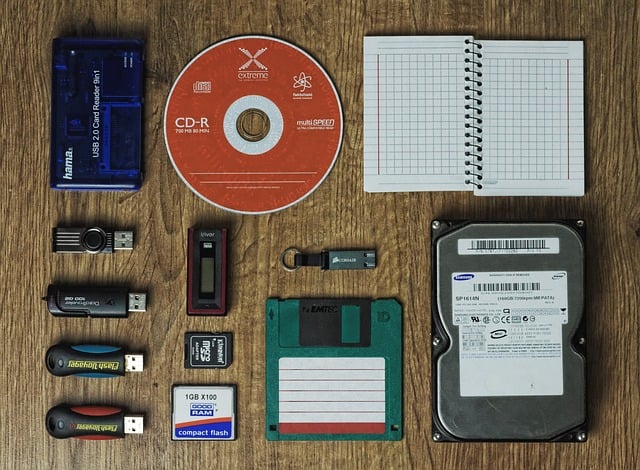Table of contents
These days, the admissibility of electronic evidence in any jurisdiction is increasingly more common: comments in social media, video recordings, instant messaging, certified emails, etc.
But this wide variety of sources of digital evidence must have access to the judicial process through some of the legally prescribed means of proof. For clarifying this topic, in this article we will answer the following questions : what is electronic evidence and how admissible it is in court?
The definition of electronic evidence and its admissibility for a judge in court
The emergence and popularization of digital communication (instant messaging, social networks, certified email, etc.) has not only provoked a revolution in the way that we relate to our personal and work life, but also in the legal environment and especially in the field of computer law.
We no longer understand how to relate to each other without technology. Digital media evolves everyday and floods our daily life. Faced with this massive use of electronic instruments, the legal environment is enjoying LegalTech solutions that are redesigning the sector, as it faces unknown conflicts due to the increase of new electronic evidence.
What is electronic evidence?
We define electronic evidence as all information with probative value that is included in an electronic media or is transmitted by said media.
For this, we distinguish two basic types of electronic evidence:
- Data stored in computer systems or devices.
- Information transmitted electronically through communication networks.

What are the steps for collecting and using electronic evidence?
In any jurisdiction, collecting and using electronic evidence has the following steps, as explained by the Judge Joaquín Delgado Martín in his article “The value of digital evidence” (in Spanish):
Obtaining the information.
The parties must access the information in a lawful manner, without violating the fundamental rights.
Incorporating data to the process.
In order to incorporate the data into the process, it should meet some requirements: relevance, necessity, legality and procedural admissibility.
Value of the incorporated data.
Lastly, if the above requirements on obtaining and incorporating data are met, the electronic evidence will be subject to assessment by a judge or court.
|
STEPS FOR COLLECTING AND USING ELECTRONIC EVIDENCE | |
|
Obtaining the electronic evidence |
• Legality |
|
Incorporating the electronic evidence to the process | • Relevance and necessity • Legality • Compliance with procedural requirements (procedural admissibility). |
|
Evaluation of the electronic evidence |
• Challenge • Authenticity • Integrity or accuracy |
How is electronic evidence assessed in Spain?
Assessing electronic evidence means giving the credibility it deserves in agreeance with the system established by law.
We can distinguish two assessment systems:
- System of legal or appraised proof: the law indicates in advance the degree of effectiveness that a judge should attribute to a certain type of electronic evidence. For example, documents with the seal of a notary public.
- Self-assessment system: the judge will study the evidence according to his/her free evaluation, while following rules or rational criteria. This is the system established for electronic evidence.
In Spain, the general rule for assessing electronic evidence is the self-assessment system (art. 384. 3 of the Spanish Civil Procedure Act)
What does self-assessment mean for electronic evidence?
It means that the law does not oblige the Judge to have proof of the facts or data that the electronic evidence collects (except in the case of public electronic documents).
The digital evidence will show its effects to prove the fact that is being discussed, but its effectiveness will be granted by a judge according to the rules of sound criticism.
In this sense, the high technological component of electronic evidence and the importance of scientific knowledge for its assessment determines the special relevance of this as expert evidence.
It should be noted that for the assessment of electronic evidence the judge should not have any doubt about two characteristics:
- The authenticity of its origin: its apparent author must be its real author.
- The integrity of the content: the data has not been altered.
If suspicions arise regarding the authenticity and/or integrity of the data, it’s very likely that the judge will end up denying the effectiveness of the electronic evidence.
Procedural position of the parties
In making an assessment, the judge should keep in mind the position of each party related to the electronic evidence provided, especially if the opposing party rejects (contests) its validity.
- If no objection is made, meaning that the validity of the electronic evidence is not questioned, the judge will have to consider it as authentic and accurate, and will evaluate it together along with the rest of the evidence.
- If there is an objection, then the arguments that argue for its rejection and those that show the evidence and expert opinions to prove its validity are both relevant for the judge.
Thus, in practice, the party seeking the validity of electronic evidence must provide all evidence possible to strengthen the evidence provided, usually with a computer expert who proves the authority and non-manipulation of the data.

Although the main method of providing electronic evidence is printing on paper the information and delivering the electronic data in a medium such as a CD, for said evidence to have real security we should have the support of a computer expert.
If it is a private document, you can choose to incorporate it into a public document, with a notarial deed.
Likewise, the possibility of going to a notary to certify what has been printed corresponds only to what is displayed, and does not ensure that the evidence has not been manipulated. It would only prove that the provided document has the same information that the notary has seen as on the electronic device’s screen.
In short, it is a matter of bringing to court all kinds of evidences that allow to convince a judge on the authenticity of the electronic evidence provided, and protect against the hypothetical challenge of the opposing party.
”The possibility of manipulating digital files, through which this exchange of ideas materializes, forms a part of reality.
Legal case on a dialogue held through the Chinese communication system “We Chat”
The anonymity that such systems authorize and the free creation of accounts with a fake identity make it perfectly possible for a communication in which to appear as a unique user relates to himself.
Hence, the challenge of authenticity of any of these conversations, when they are brought to a court through printed files, shifts the burden of proof to whoever intends to take advantage of the probative suitability.
It will be indispensable in such a case to carry out an expert’s test that identifies the true origin of this communication, the identity of the interlocutors, and thus the integrity of its content.”
STS 300/2015, of May 19 (in Spanish).
The electronic signature and its legal effects as electronic evidence
For its part, the electronic signature is a technological instrument that allows to guarantee the authenticity and integrity of electronic documents.
In accordance with the Regulation (EU) Nº 910/2014 and the Spanish Law of the Electronic Signature 59/2003, we can distinguish 3 different types of eSignatures:
- Simple electronic signature
- Advanced electronic signature
- Qualified electronic signature
The probative value of documents signed with electronic signature
Simple electronic signature
When the authenticity of a private document with the simple electronic signature is contested, the person who has presented it can request an expert comparison or propose other means of proof that may be useful. When its authenticity cannot be deduced, or no other evidence is provided, the Judge or Court will evaluate it under their criteria.
Advanced electronic signature
If a document with advanced electronic signature is disputed, the party that presented it will provide a means of proof that will be useful to prove the signature.
In this case it’s very easy, since when signing, an probative document is generated with an official time stamp that collects the electronic evidence generated during the signature process.
Additionally, in Signaturit, in order to identify the signer we accurately geolocate the specific place where the signature took place, record the origin and destination addresses of the signature request and signature time.
We also capture biometric data of the graph: speed, acceleration and pressure (for the latter, only on devices that allow it). In this way, we can present this information regarding the authenticity of the signature in case there is a dispute regarding said signature.
If this evidence deduces its authenticity, it will provide a full proof. The costs, expenses and rights that originate from the verification will be exclusively responsible to the party that formulated the challenge; likewise, if in the court’s judgement the challenge was reckless, it can impose additionally a fine of between 120 to 600 euros in Spain (art. 320.3 LEC).
Qualified electronic signature
In case of challenging the authenticity of a qualified electronic signature, it is necessary to check that the signature complies with the requirements and conditions established by the Law for these types of certificates.
In this way, the concerned party must present the certification of its signature, counting to the effect on the collaboration of the certifying entity.
“The electronic signature consists of an instrument capable of allowing a verification of the origin and the integrity of the messages exchanged through telecommunications networks, offering the bases to avoid rejection.”
Statement of the Motives of the Spanish Law 59/2003 on the Electronic Signature
Conclusion
The possibilities to manipulate electronic evidence are varied, and the court must take all possible precautions against possible alterations.
For that, by submitting the electronic evidence to the rules of sound criticism and by being valued by the court, we should facilitate the work of judges to determine its truthfulness.
The simple printings of emails, instant messages or comments on social media are mere reproductions that, before a challenge, can be left out of the term electronic evidence if there are no other means of validation.
For this reason, it’s necessary to resort to an expert test, for example, a certificate that reinforces the email as a means of proof, or a trusted service provider that guarantees the verification of an electronic signature on a financial contract.
If you want to try out our advanced electronic signature solution, you can do it today. You only have to register and you will have access to all the features that we offer for free for 14 days.
If you need more information regarding the electronic signature, its validity as expert proof, or how our solution works, don’t hesitate to get in touch with us by sending us an email to [email protected] or calling us at +34 960 03 12 03.
RELATED POSTS





